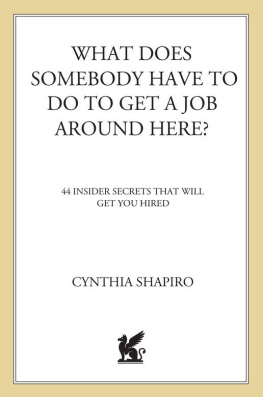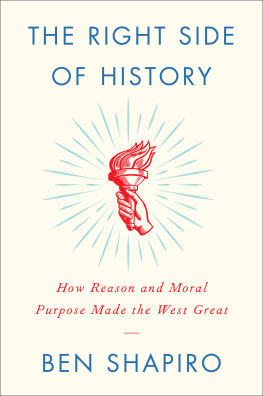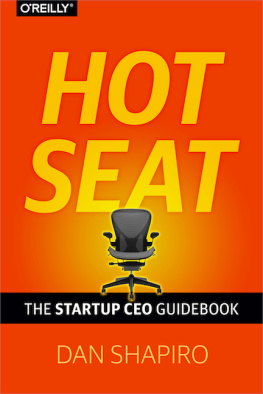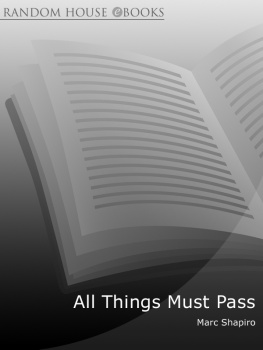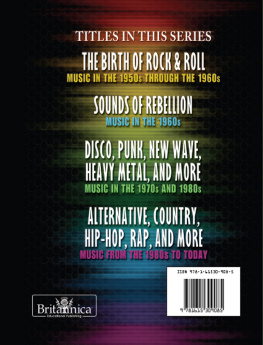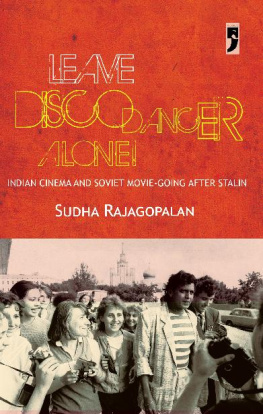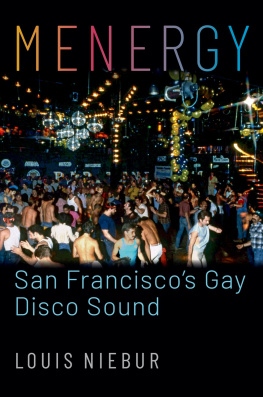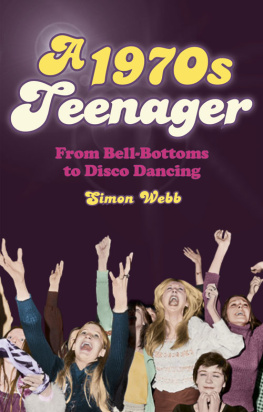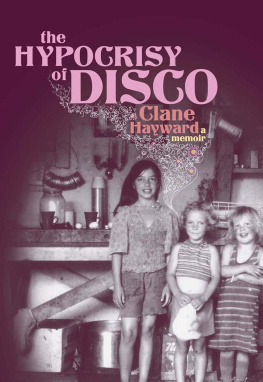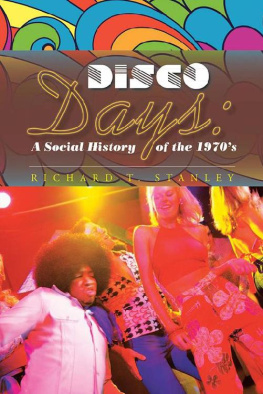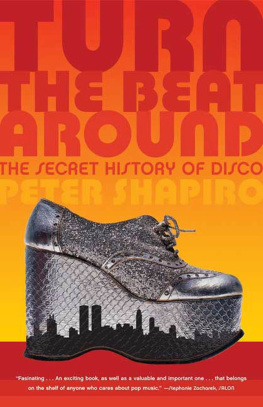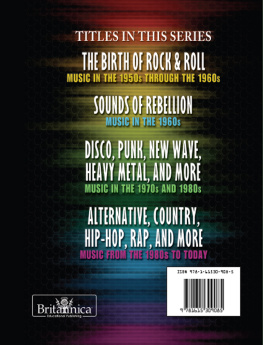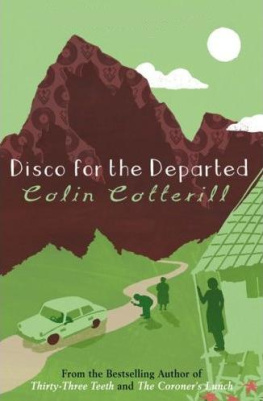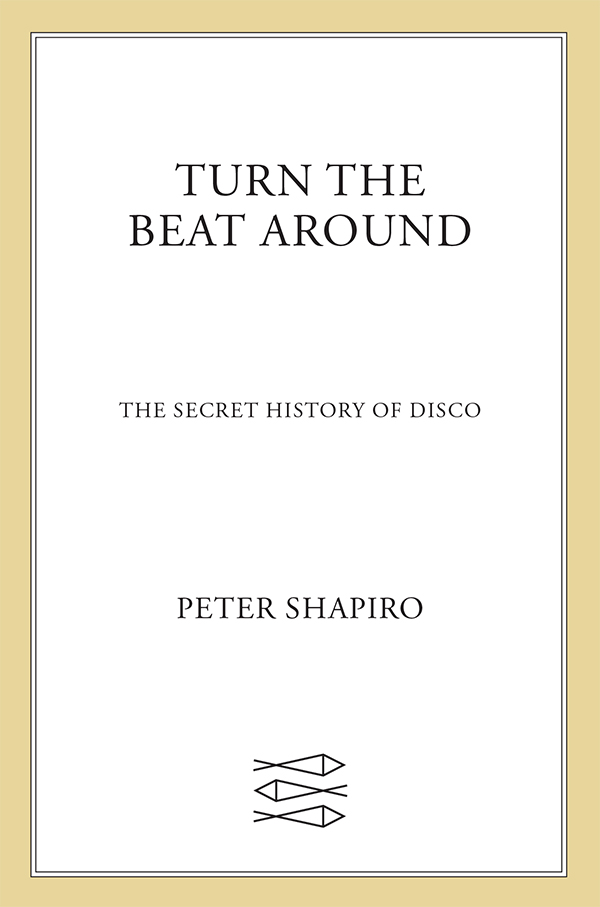Contents
Guide

The author and publisher have provided this e-book to you for your personal use only. You may not make this e-book publicly available in any way. Copyright infringement is against the law. If you believe the copy of this e-book you are reading infringes on the authors copyright, please notify the publisher at: us.macmillanusa.com/piracy.
To Rachael
Thanks to everyone involved in this project, whether by providing inspiration, granting interviews, helping me chase down leads, or feeding my vinyl jones: Nile Rodgers, Sooze Plunkett-Green, Bob George, Danny Wang, Danny Krivit, Michael Lucky Strike Corral, Tom Moulton, Ian Levine, Daniele Baldelli, Cherry Vanilla, Vicki Wickham, Barry Lederer, Bob Blank, Quinton Scott, Toni Rosano, Drew Daniels, Martin Schmidt, Dan Selzer, Chris at Dfiledamerica, Jeff Chang, David Toop, Sasha Frere-Jones, Mike Rubin, Dave Tompkins, Philip Sherburne, Rob Michaels, $mall hange, Jonathan Buckley, and Mark Ellingham. Sections of this book have appeared in different form in The Wire, and Id like to thank my editors there (Tony Herrington, Rob Young, and Chris Bohn) for allowing my theoretical ramblings on disco to appear in such an august journal.
Thanks to my agent, David Smith, and my editors, Denise Oswald and Lee Brackstone. Extra special thanks to my wife, Rachael, for putting up with my ridiculously late nights and the creeping monster that is my record collection; for cracking the whip; and for giving me never-ending amounts of support.
A dance is the devils procession, and he that entereth into a dance, entereth into his possession.
St. Francis de Sales
Hello from the gutters of N.Y.C. which are filled with dog manure, vomit, stale wine, urine and blood.
David Berkowitz
Fee fie fo fum
Were looking down the barrel of the devils gun
Nowhere to run
Weve got to make a stand against the devils gun.
CJ & Co.
To many, disco is all about those three little words: Halston, Gucci, Fiorucci. Others undoubtedly have images of long-legged Scandinavian ice queens in metallic makeup and dresses cut down to there dancing in their heads. Or maybe its the tte--tte between Andy Warhol and Bianca Jagger in the VIP room of Studio 54, each trying to outdo the other with their looks of supercilious boredom. Disco is all shiny, glittery surfaces; high heels and luscious lipstick; jam-packed jeans and cut pecs; lush, soaring, swooping strings and Latin razzmatazz; cocaine rush and quaalude wobble. It was the humble peon suddenly beamed up to the cosmic firmament by virtue of his threads and dance moves. Disco was the height of glamour and decadence and indulgence. But while disco may have sparkled with diamond brilliance, it stank of something far worse. Despite its veneer of elegance and sophistication, disco was born, maggot-like, from the rotten remains of the Big Apple.
In the early 1970s, the words New York City became a shorthand code for everything that was wrong with America. Movies like Midnight Cowboy, The French Connection, Taxi Driver, The Panic in Needle Park, The Prisoner of Second Avenue, The Out-of-Towners, Dog Day Afternoon, Shaft, Across 110th Street, and Death Wish depicted a city on the brink: a cesspool of moral and spiritual degradation; a playground for drug dealers, pimps, and corrupt cops; the government an ineffectual, effete elite running its fiefdom from cocktail parties in high-rise apartments seemingly miles above the sullied streets; the only recourse for the ordinary citizen to grab a gun and start shooting back. As New York Times film critic Vincent Canby wrote, New York City has become a metaphor for what looks like the last days of American civilization. Its run by fools. Its citizens are at the mercy of its criminals who, often as not, are protected by an unholy alliance of civil libertarians and crooked cops. The air is foul. The traffic is impossible. Services are diminishing and the morale is such that ordering a cup of coffee in a diner can turn into a request for a fat lip.
Only a few years earlier, in 1967s Barefoot in the Park, the city was the setting for young love and newlywed highjinks. Sure, the Bratters Greenwich Village apartment was small and cramped, but the conspicuously beautiful and well-scrubbed Robert Redford and Jane Fonda could scamper about Washington Square Park without shoes and have picnics if they needed to escape. By 1971, the newlyweds wouldve been played by Ernest Borgnine and Karen Black, and walking barefoot in any of the citys parks would have got them one-way tickets to Mount Sinai for a tetanus shot. How did things change so quickly?
To fully comprehend New York in the seventies, its necessary to look at where the previous decade and its progressive agenda fell off course. The liberal experiment of the 1960s was fueled by the youthful enthusiasm and swaggering confidence of a generation that had never known anything but the greatest prosperity the world had ever seen. But as soon as the economic conditions that had made the Great Society possible started to falter, the dreams turned into disillusionment, the promises became retractions, and the sweeping vision became blinkered and myopic. The civil rights marches devolved into race riots, flower power wilted and turned into the year of the barricades, Two of the figureheads of the Old Left, Martin Luther King and Robert F. Kennedy, were assassinated in the spring of 1968, and a few weeks later the full force of the Chicago Police Department was unleashed on protesters outside of the Democratic National Convention. Vietnam, numerous ecological disasters, and oppressive mores turned young people against the scoundrels running the government and big business, and against the Establishment in general; meanwhile, the previous generation was bemoaning the lack of respect for authority and the loss of values. In response, both the Left and Right became increasingly militant and increasingly intractable in their positions. Gone were the beloved communities of the civil rights marchers, protest singers, antiwar activists, and Woodstock nation, and their spirit of inclusion, participation, and democracy in action. Instead, the onset of the 1970s brought identity politics, special-interest groups, EST retreats, armed street gangs, corporate rock, tax revolts, and a politics of resentment, and attendant with all of this feelings of alienation, resignation, defensiveness, frustration, and betrayal. A kind of siege mentality replaced the great consensus that had previously characterized American life.
Although Harlem and the Brooklyn neighborhood of Bedford-Stuyvesant erupted into riot on July 18, 1964, when a police officer who had shot and killed a black teenage boy two days earlier was exonerated, New Yorks 1960s race riot was relatively small (one dead and one hundred injured) compared to the riots that ravaged other American cities like Detroit, Los Angeles, and Newark. Nevertheless, the scars were just as deep. As with these other cities, New York had experienced enormous demographic changes since the 1930s. Northern cities like New York, Chicago, and Philadelphia were the goal for millions of poor rural African Americans who migrated northward during the 1930s and 40s.
While the ranks of the citys bureaucracy necessarily swelled, services were cut proportionally in order to pay for the expansion of the municipal government. The city stopped investing in infrastructure and could barely pay its most important employees. Sanitation workers staged strikes during summer heat waves, turning the Big Apple into a festering trash heap tended by the citys twenty-five million rats. To save on overtime payments, firefighters were dispatched to blazes in dial-a-cabs to relieve those ending their shifts.



